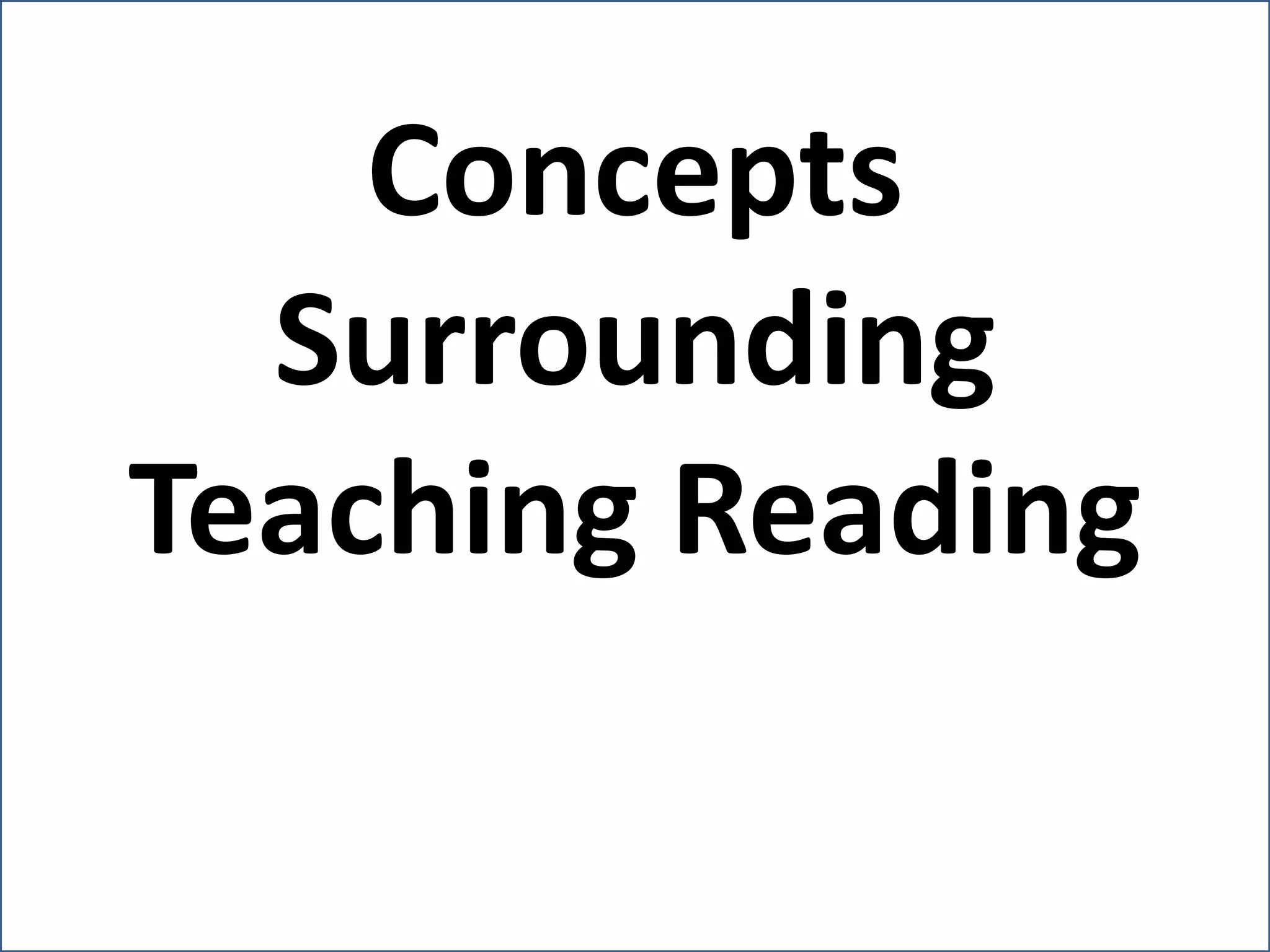The document outlines the six stages of reading development from emergent readers to advanced readers. It describes the progression from learning letter sounds to fluent decoding to reading for understanding and analysis. It also defines key concepts in teaching reading such as phonics, phonemes, graphemes, syllabic structures, sight words and methods for teaching phonics including synthetic, analytic and analogy approaches. Finally, it discusses three key strategies for teaching reading: modeled, guided and independent teaching.









![1. Decoding (word recognition) –
print/text to speech (mental speech)
2. Comprehension – understanding what
has been decoded.
3. Phonics – a method of learning to read,
corresponding a letter to its sound.
4. Phoneme – any of the distinct sounds in
a language (e.g. [b] [z] [v]
Allophones – variants (top VS paper)
5. Grapheme – the smallest unit of writing
(more like spelling)](https://image.slidesharecdn.com/teaching-reading-concepts-230317064217-e7b2099e/75/Teaching-Reading-concepts-pptx-10-2048.jpg)

![8. Blending – combining two or more
sounds together (e.g. b + a + t =bat)
9. Segmenting – breaking a word into its
individual constituent
(e.g. bat = [b] [a] [t]) for sound OR
happen = hap – pen for syllable)](https://image.slidesharecdn.com/teaching-reading-concepts-230317064217-e7b2099e/75/Teaching-Reading-concepts-pptx-12-2048.jpg)


![17. Dipthong – two sounds combined to
make one syllable
e.g. [aI] lie, my, oil
18. Tripthong – three sounds combined to
make one syllable
e.g. [auə]our, hour, tower, coward, fire
19. Scwha – lazy vowel
e.g. banana, Linda, motion, doctor
ago, about](https://image.slidesharecdn.com/teaching-reading-concepts-230317064217-e7b2099e/75/Teaching-Reading-concepts-pptx-15-2048.jpg)



















